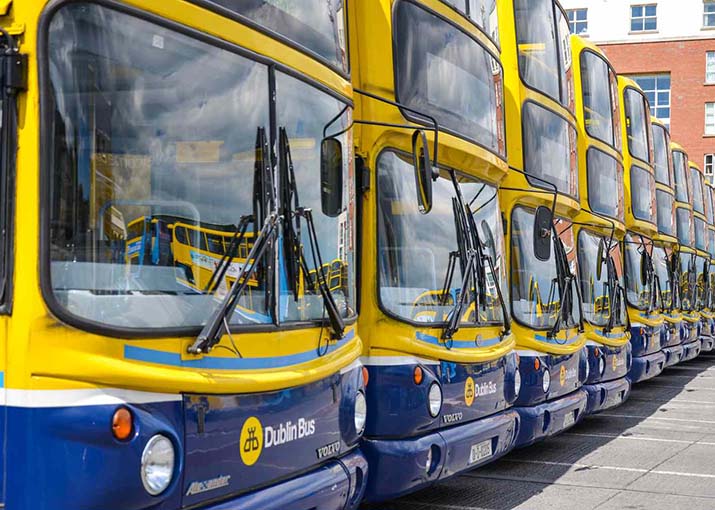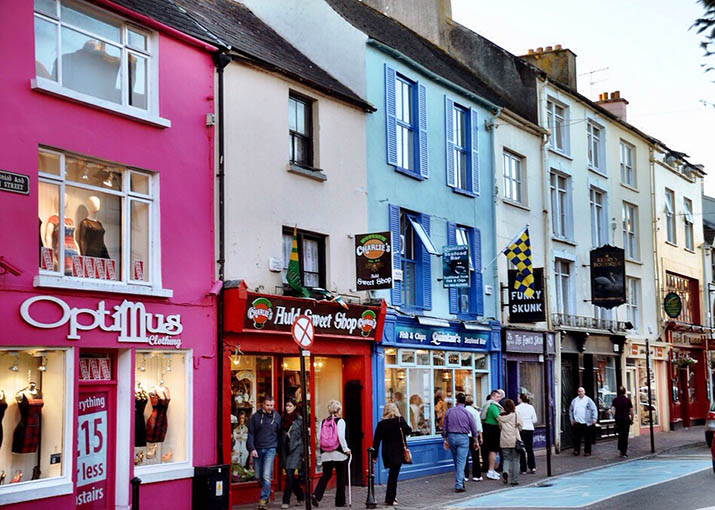Dublin, the vibrant capital of Ireland, offers an intriguing blend of historical charm and modern energy. Whether you’re visiting for a short trip or a longer stay, understanding how to navigate Dublin’s public transport can make your journey smoother and more enjoyable. In this comprehensive guide, I’ll delve into the ins and outs of Dublin’s public transport, focusing on buses and trains, and provide you with essential tips for a seamless travel experience.
Dublin’s Public Transport System
Dublin’s public transport network is a well-oiled machine, comprising various modes of transport that make getting around the city and beyond a breeze. The system is primarily managed by several operators, with Dublin Bus, Irish Rail (Iarnród Éireann), and the Luas tram system forming the backbone of public transport in the city. Each of these services plays a unique role in connecting you to Dublin’s key destinations and attractions.
Dublin Bus: Your Comprehensive Guide
Dublin Bus is the city’s primary bus service, offering extensive coverage across Dublin and its suburbs. With over 100 routes operating throughout the day and night, it provides a crucial link between different parts of the city and the surrounding areas.
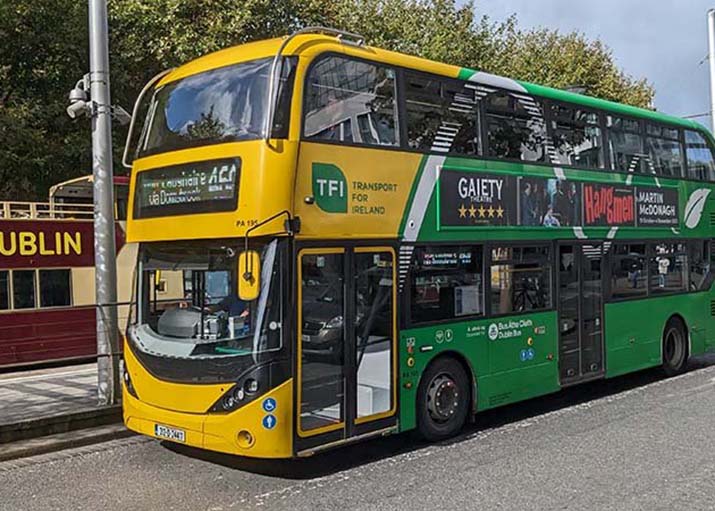
Types of Buses
- Local Buses: These cover shorter routes within the city and are denoted by route numbers such as 46A, 7, or 39. They provide convenient access to various neighborhoods and local attractions.
- Express Services: Known as “Airlink” or “Airport” buses, these provide direct routes between the city center and Dublin Airport. They are ideal for travelers arriving or departing from the airport.
- Night Buses: Operating primarily on weekends and late nights, these buses ensure you can get home safely when regular services have ceased.
How to Use Dublin Bus
- Finding a Route: The Dublin Bus website and mobile app offer detailed route maps and timetables. You can also use Google Maps for real-time bus information, which is particularly useful for planning your journey on the go.
- Buying Tickets: Tickets can be purchased directly on the bus (cash only), at various ticket outlets, or using a Leap Card. The Leap Card is a smart card that offers discounted fares and is valid across the city’s public transport network.
- Paying for Your Journey: If using a Leap Card, simply tap it on the card reader when boarding and alighting. For cash payments, ensure you have the exact change, as drivers cannot provide change.
Tips for Navigating Dublin Bus
- Check Timetables: Buses generally run every 10-15 minutes during peak hours, but schedules can vary. Always check the timetable in advance to avoid long waits.
- Plan Your Route: Utilize online route planners or the Dublin Bus app to find the most efficient route to your destination. This can save you time and ensure you’re on the right bus.
- Peak Hours: Buses can be crowded during peak hours (8-9 AM and 5-6 PM). If possible, try to avoid traveling during these times or plan for a potentially packed bus ride.
Irish Rail (Iarnród Éireann): Exploring Dublin by Train
Irish Rail operates train services connecting Dublin with other major cities and towns across Ireland. Within Dublin, the most relevant services are the DART (Dublin Area Rapid Transit) and the suburban rail lines.
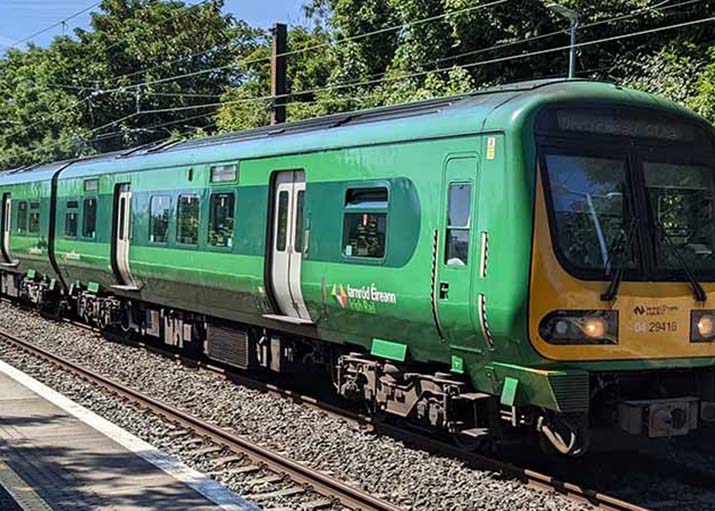
DART: The Local Train Service
- Coverage: The DART line runs along Dublin’s picturesque coast, extending from Howth and Malahide in the north to Bray and Greystones in the south. This scenic route offers stunning views of Dublin Bay and is an excellent way to explore the coastal areas.
- Stations: Key stations include Connolly, Pearse, and Tara Street in the city center. These stations serve as major hubs for accessing different parts of the city and connecting to other train services.
Suburban Rail Lines
- Coverage: Suburban rail lines extend beyond Dublin to towns and cities such as Maynooth, M3 Parkway, and Longford. These lines are ideal for exploring areas outside the city or traveling to nearby regions.
- Frequency: Trains operate frequently, with more services available during peak travel times. Check timetables for specific schedules and frequencies.
How to Use Irish Rail
- Finding a Route: Timetables and route information are available on the Irish Rail website or app. Google Maps and other travel planning apps also provide train schedules and route options.
- Buying Tickets: Tickets can be purchased at train stations, online, or via the Irish Rail app. For DART services, you can use a Leap Card for discounted fares.
- Paying for Your Journey: Ticket machines at stations accept credit/debit cards and cash. If using a Leap Card, simply tap it at the card reader at the station and on the train.
Tips for Navigating Irish Rail
- Check Timetables: Trains are generally punctual, but it’s wise to check schedules in advance to avoid any surprises.
- Seat Reservations: While seat reservations are not always necessary, they can be helpful during busy periods or if you prefer a guaranteed seat.
- Travel Passes: Consider purchasing a rail pass if you plan to travel extensively within Ireland. These passes offer unlimited travel within specified periods and can be cost-effective.
Luas: Dublin’s Tram System
The Luas tram system enhances Dublin’s public transport network with its two lines: the Red Line and the Green Line. The Red Line connects the west and east of the city, while the Green Line runs from the north to the south.
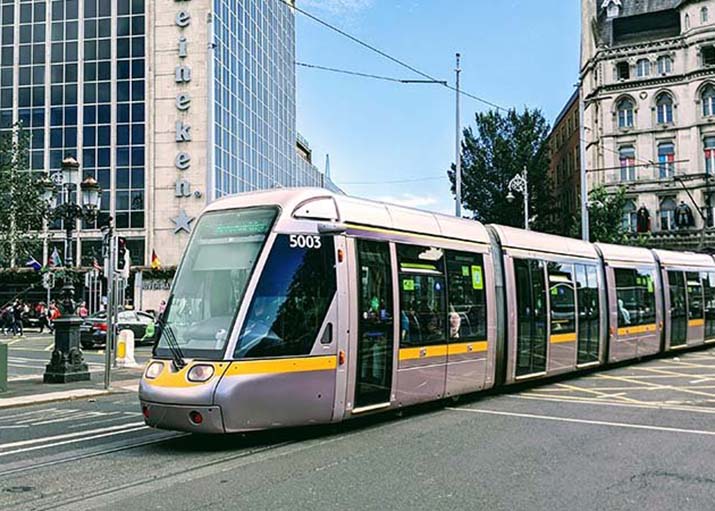
How to Use Luas
- Finding a Route: Luas routes and timetables are available on the Luas website or app. Stations are clearly marked, and route maps are displayed at each stop.
- Buying Tickets: Tickets can be purchased at vending machines located at Luas stations. You can also use a Leap Card for travel on the Luas.
- Paying for Your Journey: Use a Leap Card or purchase a ticket from the vending machine. Ensure you validate your ticket before boarding.
Tips for Navigating Luas
- Peak Times: The Luas can be busy during rush hours, so plan your journey accordingly. If possible, travel outside peak times for a more comfortable experience.
- Plan Your Journey: Use route planners or the Luas app to determine the best route and check real-time updates. This will help you avoid delays and navigate the system efficiently.
Practical Tips for Using Dublin’s Public Transport
Travel Cards and Passes
- Leap Card: The Leap Card is a smart card offering discounted fares on Dublin’s public transport network, including buses, trains, and the Luas. It’s a convenient and cost-effective option for frequent travelers.
- Visitor Leap Card: A special card designed for tourists, offering unlimited travel on Dublin Bus, Luas, and DART for a specified period. It’s ideal for visitors looking to explore the city extensively.
Safety and Etiquette
- Safety: Dublin’s public transport system is generally safe, but always remain aware of your surroundings, especially in crowded areas. Keep your belongings secure and avoid displaying valuables.
- Etiquette: Practice good manners by giving up your seat to elderly passengers or those with disabilities. Keep noise levels down and avoid blocking aisles with large bags or personal items.
Language and Communication
- English: English is the primary language used on Dublin’s public transport, making communication straightforward. Most transport staff are fluent in English and can assist with any questions or issues.
- Help and Assistance: If you need assistance, don’t hesitate to ask transport staff or station personnel for help. They are usually friendly and knowledgeable.
Exploring Beyond Dublin
For those looking to venture beyond Dublin, Irish Rail offers a comprehensive network of trains connecting to various parts of Ireland. Additionally, buses and rental cars provide options for exploring more remote destinations and scenic areas.
Navigating Dublin’s public transport system can greatly enhance your experience in the city. With a bit of planning and knowledge, you can efficiently use Dublin Bus, Irish Rail, and the Luas to explore the city and beyond. Whether you’re a first-time visitor or a seasoned traveler, understanding the public transport options available will ensure you make the most of your time in this captivating city.
